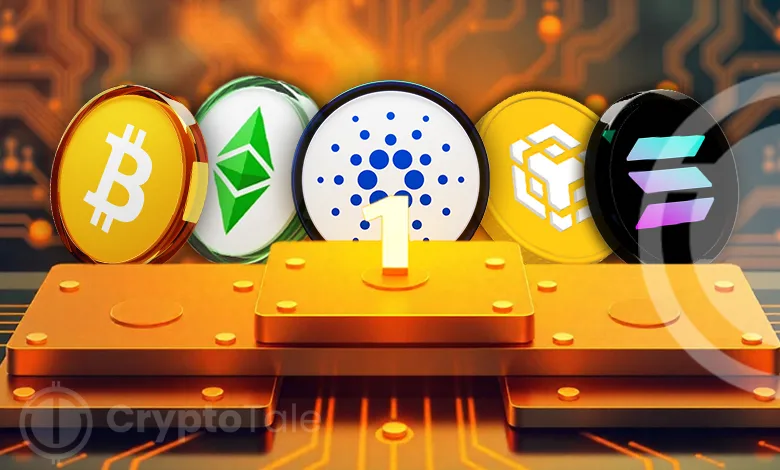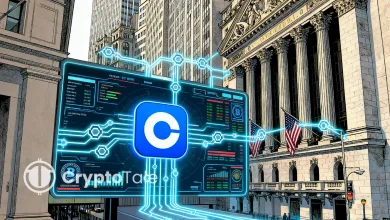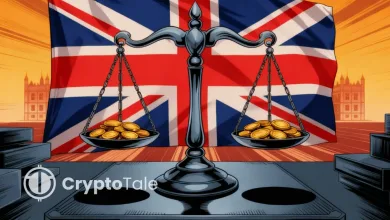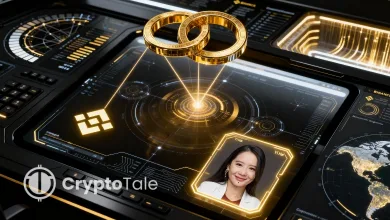Top 5 L1s: Building & Booming! Next Price Targets?

For anyone who wants to be involved in cryptocurrency and blockchain, it is vital to have a basic understanding of what Layer 1 blockchains are. These platforms contain core functions that include capturing transactions and validating data. In this article, we’ll talk about the top layer 1 blockchain and the reasons why these layer 1 solutions are critical.
Reasons Why Layer 1 Solutions Are Critical
Foundation for Applications: Layer 1 blockchains are the base layer for decentralized applications (dApps), decentralized finance (DeFi), non-fungible tokens (NFTs), and plenty of others.
Transaction Speed and Cost: The various Layer 1 blockchains also have varying speeds and costs. For instance, Bitcoin is secure, but the transaction speed is slower than that of Solana or Binance Smart Chain.
Innovation and Development: Some blockchains, such as Ethereum and Cardano, promote the creation of applications; hence, there are many tools, projects, and communities associated with them.
List of Top Layer 1 Blockchains
Bitcoin (BTC)
Bitcoin is the first blockchain-based application and is currently the largest Layer 1 cryptocurrency. Launched in 2009 by a person or a group of persons with the pseudonym Satoshi Nakamoto, Bitcoin is a decentralized digital currency that does not involve the conventional financial system.
Why is Bitcoin a Top Layer 1 Blockchain?
Bitcoin is one of the safest and most reliable cryptocurrencies today. Being a decentralized currency, it uses “miners” to check transactions via PoW. This process makes it almost impossible for any unauthorized person to alter any Bitcoin transaction that has been conducted. The Bitcoin network has remained uninterrupted for more than 15 years, demonstrating its resilience, security, and reliability.
Key Highlights:
Security: Bitcoin’s blockchain is very secure, making it very hard for hackers to modify transaction information.
Limited Supply: One of the most significant factors is that there will only be 21 million Bitcoins. This limitation in maximum supply maintains its scarcity and value.
Widely Accepted: With its popularity, Bitcoin has become a widely accepted cryptocurrency. Many merchants, business entities, and investors across the globe have started accepting Bitcoin as payment.
At press time, Bitcoin was trading at $105,155, a decline of 1.13% in the past 24 hours, according to CoinMarketCap. It has increased by 11.66% over the past 30 days and has a market capitalization of $2.09T. The coin’s volume has slightly decreased by 2.11% to $46.04B.
Related: Top 5 AI Tokens: Dev Powering Future Growth?
Ethereum (ETH)
The leading layer 1 Blockchain is Ethereum (ETH), founded by Vitalik Buterin in 2015. Ethereum restricts currency transfers and allows developers to design decentralized applications (dApps), making them more unique.
Why is Ethereum Popular?
Ethereum’s smart contracts enable individuals to set conditions of cause and effect on the blockchain. For instance, Ethereum can be used to build games, financial applications, and digital economies. It also supports the increasing world of decentralized finance and non-fungible tokens.
Key Highlights:
Smart Contracts: Enable the development of applications directly on the blockchain platform.
DeFi and NFTs: Ethereum is the most popular blockchain behind today’s DeFi and NFT projects.
Transitioning to PoS: The largest altcoin is Ethereum, which is transitioning to a new proof-of-stake system that is more environmentally friendly.
At the time of writing, Ethereum was priced at $2,654.88 and had increased by 1.42% in the past day. Within the past month, Ethereum has risen by 46.80% and has a total market capitalization of $320.56 billion. ETH has a trading volume of $18.23B, a dip of 4.65% in the last 24-hours.
Binance Smart Chain (BNB)
Binance Smart Chain is an open-source blockchain that was developed by Binance in 2020, and it uses BNB as its native token. BSC is built to be faster and cheaper than Ethereum, addressing all issues of slow scaling and high fees while supporting smart contracts and dApps.
Why is Binance Smart Chain Popular?
The low transaction rate of BSC makes it a preferred choice. Also, the robust structure of the BSC network paves the way for faster transactions, making it an ideal layer 1 solution.
Key Highlights:
Low Fees: BSC has a low transaction fee, and this makes it cheap for users to use it.
Fast Transactions: BSC processes transactions fast, which makes it unique compared to other blockchains.
Growing dApp Ecosystem: BSC supports many dApps and DeFi projects, which represent many possibilities to users. Furthermore, BSC is integrated with Ethereum tools, which makes it suitable for users who want to make their transactions fast while reducing costs.
As of press time, Binance Coin (BNB) stands at a market capitalization of $94.31 billion and has a price of $669.48. Its price has increased by 0.32% over the last 24-hours, and its volume declined by 9.42%, reaching $1.57B.
Solana (SOL)
Solana (SOL) is a Layer 1 blockchain focusing on speed and throughput. This can handle thousands of transactions per second, making it one of the fastest Layer 1 blockchains in the market today.
Why is Solana a Top Contender?
The reason for the speed of the Solana blockchain is that it utilizes PoH (proof of history) alongside PoS (proof of stake). Proof of history provides a unique certificate for each transaction, proving it was ordered on time. This allows Solana to perform transactions very efficiently and at the lowest cost.
Key Highlights
High Speed: It is a Layer 1 blockchain that can handle about 65,000 transactions per second.
Low Costs: The gas fees charged on the Solana network are very low.
Ideal for NFTs and DeFi: Due to its high speed and low cost, Solana is now a go-to platform for NFTs and DeFi projects.
Solana’s high speed and low fees make it the ideal blockchain for users requiring a scalable and cheap Layer 1 network. As of press time, Solana (SOL) is trading at $157.16; its price fell by 2.77% in the past day and increased by 8.18% over the past month. The market cap of SOL is at $82.12B and has a 24-hour trading volume of $3B.
Cardano (ADA)
Another top Layer One blockchain is Cardano, symbolized by the ADA token. This protocol is also famous for its emphasis on security and ecological preservation. Established by Charles Hoskinson, one of the co-founders of Ethereum, Cardano is an attempt to provide a more environmentally friendly and optimally scaled blockchain through a scientific approach.
Why Cardano Stands Out?
Cardano employs a proof-of-stake consensus algorithm known as Ouroboros that is much more efficient than proof-of-work. Its development is well thought out and follows a peer-reviewed process, which has helped garner the support of the community, academics, and researchers.
Key Highlights:
Eco-Friendly: Cardano’s PoS model consumes much less power than other blockchains.
Research-Driven: The fundamentals of Cardano are based on research and peer review.
Growing Ecosystem: As innovative contract functionalities, dApps, and DeFi projects are being onboarded to the Cardano platform.
A focus on sustainability is a rarity in the Layer 1 blockchains and is one of the reasons why many are drawn to Cardano. At the time of writing, ADA is trading at $0.6870, a decline of 0.48% in the last 24-hours and an increase of 3.81% in the past month. It has a trading volume of $523.54B and a market cap of $24.28B.
Related: Top 5 DePIN Tokens, Who’s Primed to Explode?
Conclusion
Knowing the basic characteristics of the top Layer 1 blockchain is essential for anyone who wants to start investing and developing dApps. Layer 1 blockchains possess all the vital features necessary for any transaction, application, or project related to the blockchain: security, speed, cost, and sustainability. These Layer 1 platforms will become increasingly important as the crypto space expands and will play a crucial role in the future of financial technology.





